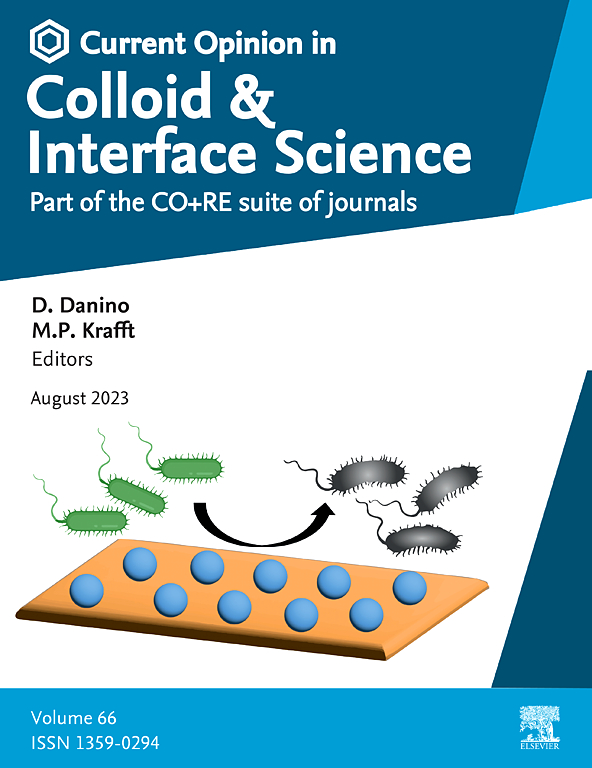Electrically conductive microcellular foams via high internal phase emulsions
IF 7
2区 化学
Q1 CHEMISTRY, PHYSICAL
Current Opinion in Colloid & Interface Science
Pub Date : 2025-06-30
DOI:10.1016/j.cocis.2025.101939
引用次数: 0
Abstract
Emulsion-based microcellular foams offer several advantages over conventional extruded foams, including small cell size, open cell structure, and various functionalities. To transform emulsions into polymer foams, a high internal phase emulsion must be formed in which the monomer-based oil phase acts as the continuous phase and the aqueous phase with a very high volume fraction is the dispersed phase, and the cell structure must be maintained during the polymerization process. Electrically conductive foams are fabricated by incorporating conductive fillers or additives, and these materials need to be designed so as not to affect the stability of the emulsion. The key to successful emulsion-based functional foams lies in achieving a synergistic combination of the inherent advantages of the emulsion and the specific roles of functional additives. In this mini-review, we discuss the characteristics of high internal phase emulsions and foams obtained by polymerizing such emulsions, and then discuss the preparation, morphology, and properties of electrically conductive emulsion-based foams. We also explore the development trends of carbonized polymer foams and investigate methods to achieve optimal performance as electrically conductive materials.
导电微孔泡沫通过高内相乳剂
与传统的挤出泡沫相比,基于乳化的微孔泡沫具有许多优点,包括小孔尺寸、开孔结构和各种功能。要使乳液转化为聚合物泡沫,必须形成以单体基油相为连续相,以体积分数很高的水相为分散相的高内相乳液,并且在聚合过程中必须保持细胞结构。导电泡沫是通过加入导电填料或添加剂来制造的,这些材料需要设计成不影响乳液的稳定性。乳化基功能泡沫成功的关键在于将乳液的固有优势与功能添加剂的特定作用实现协同结合。在这篇综述中,我们讨论了高内相乳剂和通过聚合得到的高内相乳剂泡沫的特性,然后讨论了导电乳剂泡沫的制备、形态和性能。我们还探讨了碳化泡沫聚合物的发展趋势,并研究了实现最佳导电材料性能的方法。
本文章由计算机程序翻译,如有差异,请以英文原文为准。
求助全文
约1分钟内获得全文
求助全文
来源期刊
CiteScore
16.50
自引率
1.10%
发文量
74
审稿时长
11.3 weeks
期刊介绍:
Current Opinion in Colloid and Interface Science (COCIS) is an international journal that focuses on the molecular and nanoscopic aspects of colloidal systems and interfaces in various scientific and technological fields. These include materials science, biologically-relevant systems, energy and environmental technologies, and industrial applications.
Unlike primary journals, COCIS primarily serves as a guide for researchers, helping them navigate through the vast landscape of recently published literature. It critically analyzes the state of the art, identifies bottlenecks and unsolved issues, and proposes future developments.
Moreover, COCIS emphasizes certain areas and papers that are considered particularly interesting and significant by the Editors and Section Editors. Its goal is to provide valuable insights and updates to the research community in these specialized areas.

 求助内容:
求助内容: 应助结果提醒方式:
应助结果提醒方式:


